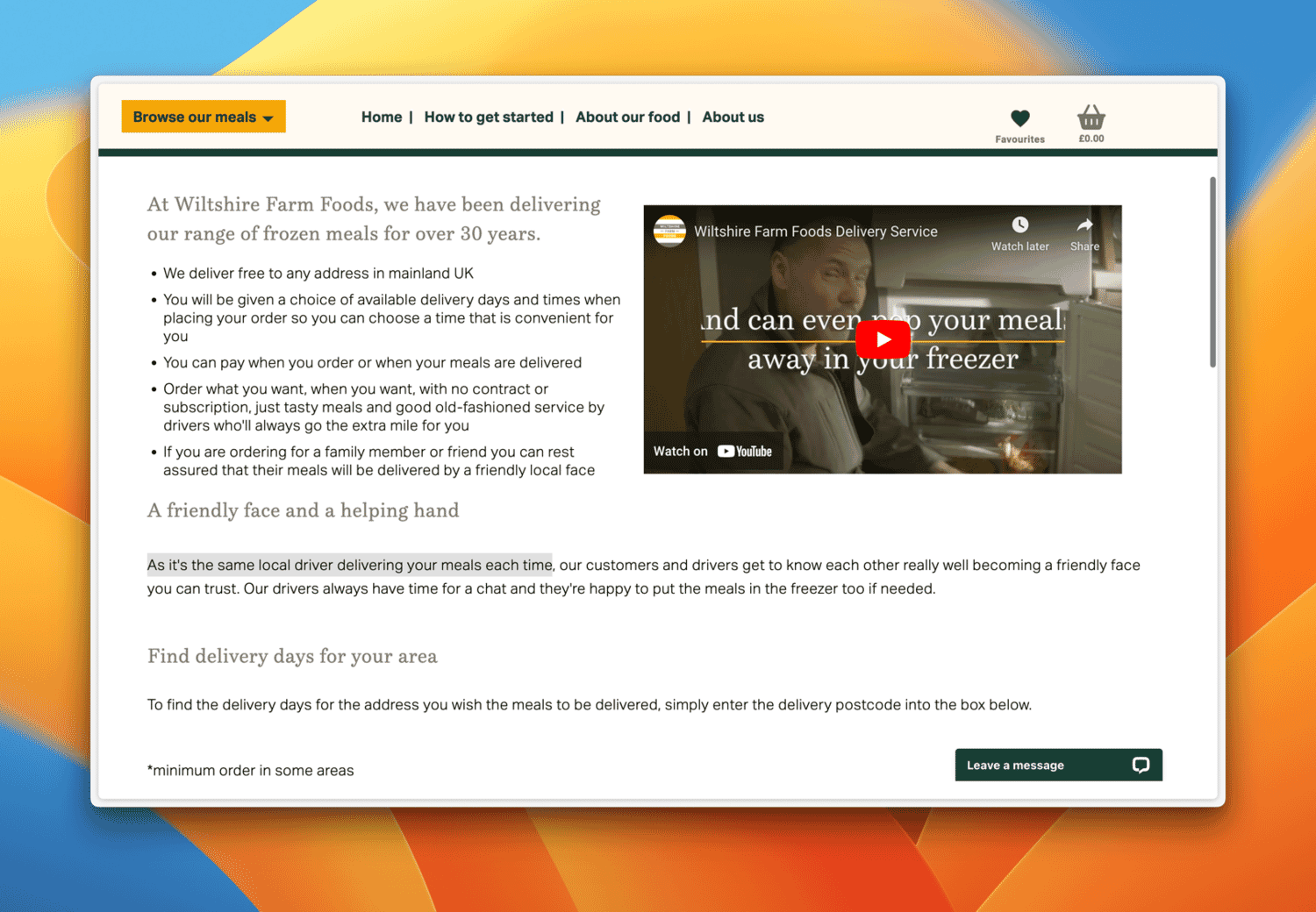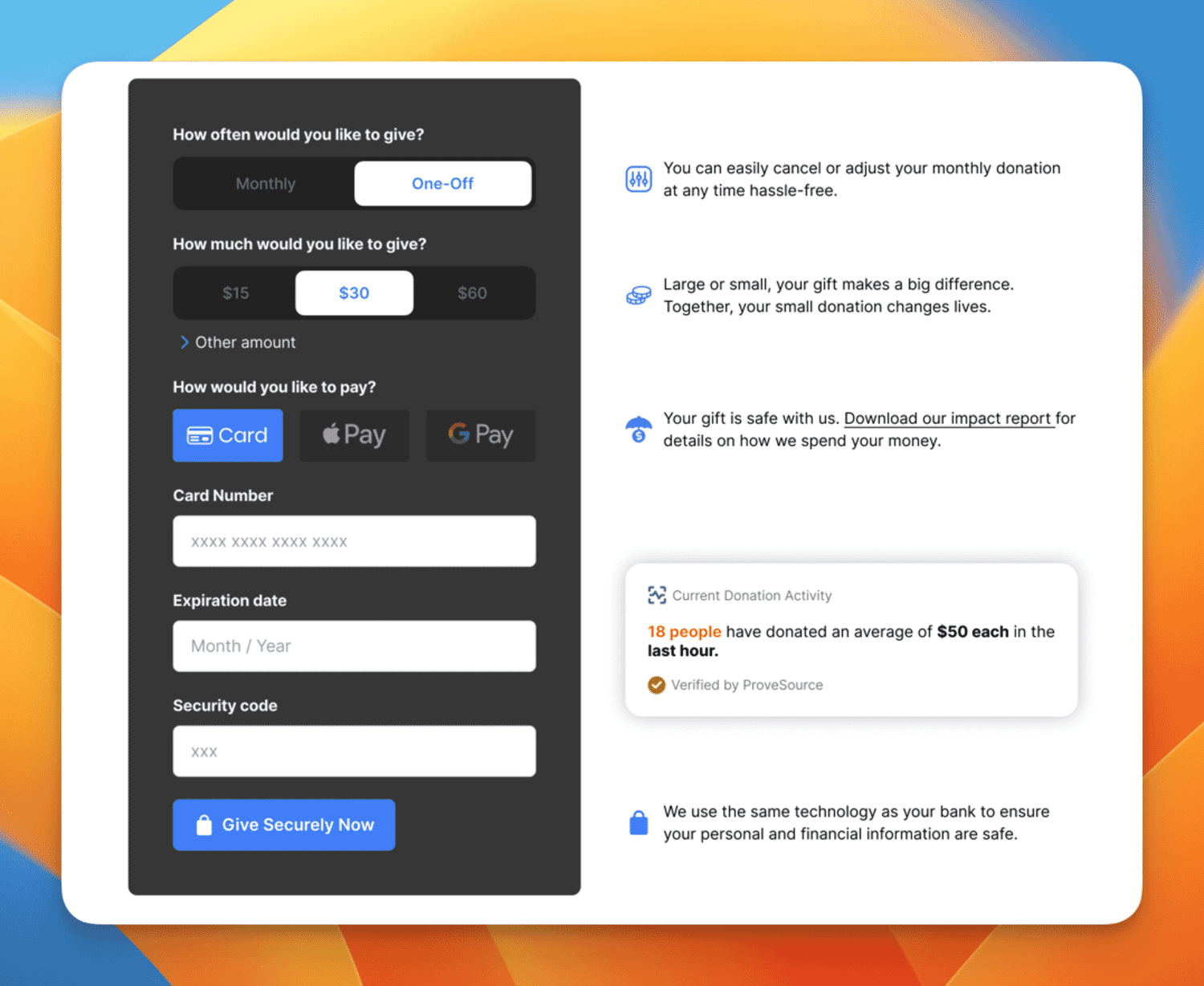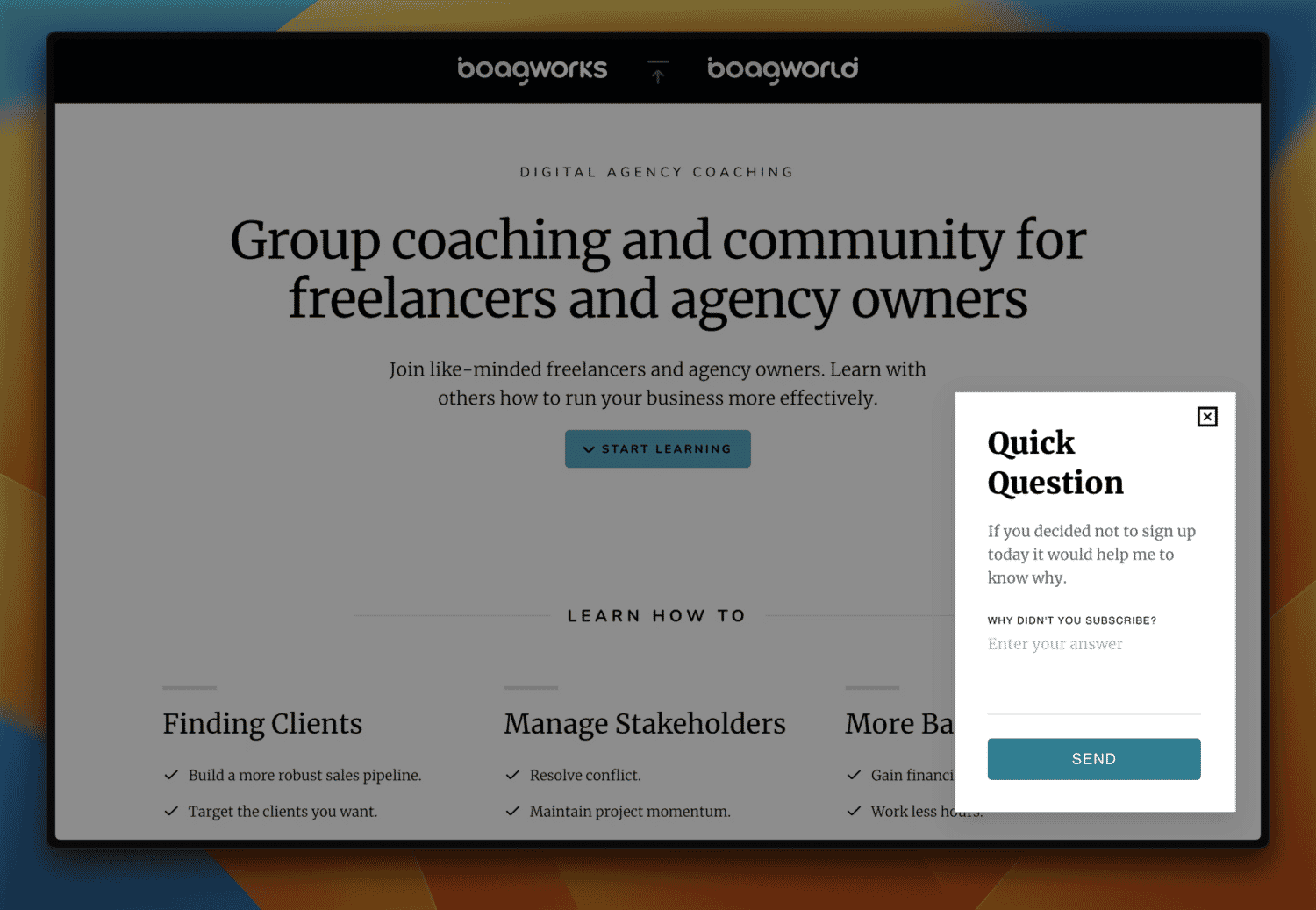Let’s face it, users are naturally cautious online. They’ve got questions buzzing in their heads and concerns that need addressing before they’ll even think about clicking that “Buy Now” button. In the digital marketplace, understanding and addressing these customer objections is crucial for success.
In this article, I will explore sales objection handling techniques, its importance in improving website conversion rates, and practical strategies for implementing effective techniques on your landing pages. We’ll delve into how objection handling can significantly impact your online sales process.
But let’s begin by explaining what objection handling means, why it matters, and how it relates to the broader concept of handling sales objections in the digital marketplace.
The Power of Objection Handling
Objection handling is the process of addressing and overcoming potential customer concerns that may prevent them from making a purchase or taking a desired action.
In digital, this involves anticipating and proactively addressing these concerns on your website, particularly on landing pages designed to convert visitors into customers or leads.
Why Is Objection Handling Important
The importance of objection handling in digital marketing cannot be overstated. By effectively addressing customer objections, you can:
- build trust and credibility with your audience,
- reduce friction in the sales process,
- increase conversion rates and overall sales,
- and improve customer satisfaction and loyalty.
In other words, when you address concerns, you demonstrate transparency and show that you understand your customers’ needs. This creates a smoother path to conversion and removes barriers to purchase, leading to higher conversion rates.
Understanding The Types Of Objection Handling
To effectively handle objections, it’s crucial to understand why users have them and the psychology behind these concerns. A lot of user objections are driven by deep seated psychological characteristics such as loss aversion or cognitive dissonance. Put another way, the primitive part of our brain constantly seeks danger and prioritizes survival. While these instincts are seldom relevant in today’s world, they remain active. We, therefore, rationalize these primitive fears by transforming them into objections.
These concerns manifest themselves as:
- price concerns,
- trust and credibility issues,
- feature or benefit doubts,
- and timing or urgency problems.
However, user objections are also driven by other factors, each with its own impact on user behavior:
- Fear of making a wrong decision can lead to hesitation. The risk of wasting money or choosing an unsuitable product often causes users to pause before committing to a purchase.
- Limited budget or resources make users more cautious. Financial constraints naturally lead to more careful consideration of purchases, as users want to ensure they’re getting the best value for their money.
- Lack of information or understanding creates uncertainty. Insufficient product details or unclear messaging can leave users feeling unsure about whether a product or service truly meets their needs.
- Past negative experiences breed skepticism. Previous disappointments with similar products or companies can make users wary of making the same mistake twice, leading to increased scrutiny of new offerings.
- Comparison with competitors causes indecision. Users may be unsure if your offering is the best choice among available options, leading to prolonged decision-making processes as they weigh the pros and cons of each alternative.
With so many possible objections, it becomes crucial to identify what specific objections are driving user behavior on your website.
Objection Handling Process
Fortunately, identifying the objections that your website visitors have is a simple two step process.
1. Run An Exit-Intent Survey
The most effective ways to identify objections is by using an exit-intent survey. This survey only appears as somebody is about to leave your website so as not to interrupt people from potentially acting. It asks a single, simple question:
If you decided not to purchase today, it would be helpful to understand why.
One approach to this survey is to offer the user multi-choice answers for easy analysis. You would list common responses such as:
- It’s too expensive.
- I don’t trust this company to deliver.
- I wasn’t sure if it would do what I need.
However, I find that this can influence people’s answers and excludes more unexpected responses. Instead I favor a simple text area where people can respond in anyway they want. We can then use AI to analyze the results.
Harnessing AI for Data Analysis
Once you’ve collected survey responses, download the results as a CSV file and upload to ChatGPT. Ask the platform to identify themes in the answers and return them as a list sorted by the number of times a theme was mentioned.

This will give you a clear picture of what objections are most common among your users.
With a clear understanding of your users’ main objections we can start working out how we can address these objections.
How to Address User Objections
Implementing the best objection handling techniques for visitor objections involves two essential steps. First, we must reduce the validity of the objection. Second, we need to clearly communicate how we are addressing the concern.
Reduce Or Remove The Objection
The most effective way to handle objections is to address the underlying concerns. For instance, if a customer worries about returning an item, provide a generous 365-day return policy with free return shipping. This strategy is what Zappos employed to successfully sell shoes online when others believed it was impossible.

You can address objections in several ways. For instance, to tackle price concerns, consider offering payment plans, money-back guarantees, or pricing comparisons to ease financial worries.
Wiltshire Farm Foods provides frozen ready meals for the elderly. They alleviate concerns about strangers entering homes by conducting police checks on all drivers and ensuring that customers often receive the same driver for deliveries.

After addressing the objection, you must communicate this to the user.
Address Objections In Your Copy
We must clearly communicate our objection handling in the landing page copy. Consider the following points:
- Be clear and concise. Write statements that directly address objections using simple, easy-to-understand language. Avoid jargon and get straight to the point.
- Show empathy. Demonstrate that you understand the user’s concern and why it matters to them. This builds rapport and trust with your audience.
- Back up your claims. Support your objection-handling statements with data, testimonials, or guarantees to add credibility and reassurance.
- Leverage social proof. Display trust badges, certifications, customer testimonials, and case studies to build credibility and trust.
- Provide comprehensive information. Clearly outline product features and benefits, offer detailed comparisons, and create in-depth product descriptions to address any doubts.
- Use visual demonstrations. Incorporate video demonstrations or interactive features to show your product in action and highlight its benefits.
You can often address objections with straightforward statements at key moments, such as:
- “Wondering about our quality? Our products are backed by a 30-day satisfaction guarantee.”
- “Concerned about shipping costs? Orders over $50 ship free.”
- “Worried about privacy? We never share your information without consent.”
By implementing these strategies in your objection handling statements, you’ll be better equipped to address user concerns, build trust, and ultimately improve your landing page conversion rates.
Once you have these statements, you can now incorporate them into your website.
Incorporating Objection Handling into Your Website
To effectively incorporate objection handling into your website, bear the following in mind:
- Address common objections in headlines and subheadings. Make your objection handling visible at first glance.
- Use attention-grabbing text to tackle key concerns. Immediately draw attention to how you’re addressing user worries.
- Weave responses throughout your page copy. Don’t confine objection handling to one section; address concerns throughout your content preferably at the point the objection is likely to occur.
- Display customer reviews and ratings prominently. Feature feedback from real users to build trust and credibility.
- Showcase detailed case studies and success stories. Provide examples of how your product or service has helped others overcome similar objections.
- Feature logos of well-known clients or partners. Build credibility by association with recognized brands or organizations.
- Implement user-generated content. Encourage and display content created by satisfied customers to provide authentic social proof.

However, there is one additional nuance that needs to be considered.
Tailoring Your Approach
It is important to recognize that different user groups will have unique objections and concerns. You may find that you will need different landing pages to handle these different audiences. Alternatively you may have to use dynamic content based on user behavior or characteristics.
You will also need to refine your approach over time, as you will rarely find the perfect approach to objection handling on your first attempt.
Implement Continuous Improvement
To truly excel in objection handling, it’s crucial to embrace a mindset of continuous improvement. This approach begins with implementing ongoing testing of your strategies. By consistently evaluating and refining your techniques, you can ensure that your objection handling remains effective and up-to-date.
A/B Test Objection Handling Statements
A key component of this process is A/B testing. This method allows you to compare different objection handling approaches side by side, providing concrete data on which techniques resonate best with your audience. For instance, you might test two different ways of addressing price objections to see which one leads to higher conversion rates.
As you implement these tests, it’s vital to keep a close eye on your conversion rates. This metric serves as a barometer for the success of your objection handling strategies. By monitoring how changes in your approach impact overall conversions, you can quickly identify which tactics are most effective and which might need further refinement.
Refine Your Objection Handling With Occasional Surveys
However, don’t rely solely on quantitative data. Regularly surveying your customers provides invaluable qualitative insights. These surveys can help you identify new or evolving objections that your current strategies might not be addressing. By staying attuned to your customers’ changing needs and concerns, you can proactively update your objection handling approach, ensuring it remains relevant and effective over time.
A failure to continually refine your objection handling is probably the most common mistake. However, it is not the only one.
Avoiding Common Pitfalls in Objection Handling
If you want to ensure your objection handling is effective, there are certain common pitfalls to be aware of:
- Never ignore or dismiss objections. Take all concerns seriously, even if an objection seems minor. Address objections directly and avoid minimizing customer concerns.
- Avoid over-promising or exaggerating. Stick to realistic claims and provide evidence to back up your statements. Be transparent about limitations and clearly communicate any potential drawbacks.
- Steer clear of manipulative techniques. Avoid high-pressure tactics and focus on building value and trust. Use ethical persuasion methods to convince users of your offering’s merits.
In my experience it is always worth prioritizing transparency and honesty. This foundation of trust is crucial for building credibility with your audience. Be upfront about any limitations or potential drawbacks of your product or service. By acknowledging these aspects openly, you demonstrate integrity and show respect for your customers’ intelligence.
Building on this transparency, avoid the temptation to make exaggerated claims. Instead, focus on factual, provable statements about your offering. This approach not only maintains your credibility but also sets realistic expectations for your customers. When you stick to the truth, you’re more likely to attract customers who are genuinely a good fit for your product or service, leading to higher satisfaction and loyalty in the long run.
In contrast, when people are manipulated into making purchases, they inevitably experience buyer’s remorse, resulting in poor reviews, increased returns, and a negative perception of the brand.
The Future of Objection Handling
Finally, as technology continues to evolve, I advise keeping an eye on emerging trends in objection handling. AI and machine learning are becoming increasingly important in objection prediction and handling.
In particular, I would encourage you to consider using AI-powered chatbots as a way to deal with the objections of individuals via your website.
You could also leverage predictive analytics to anticipate objections based on user behavior and proactively address them.
Conclusion
In conclusion, developing a robust objection handling framework is a critical component of improving your website’s conversion rate. By understanding and addressing customer concerns, you can build trust, reduce friction, and ultimately increase sales.
But remember, successful objection handling is an ongoing process that requires dedication, empathy, and a deep understanding of your customers’ needs and concerns.
That said, if you start implementing these objection handling strategies today you will see improvements in your conversion rates.
